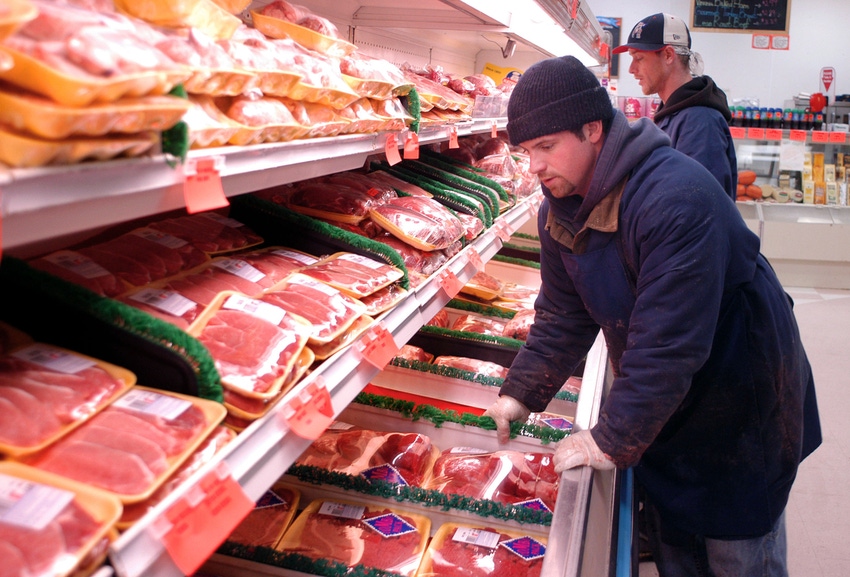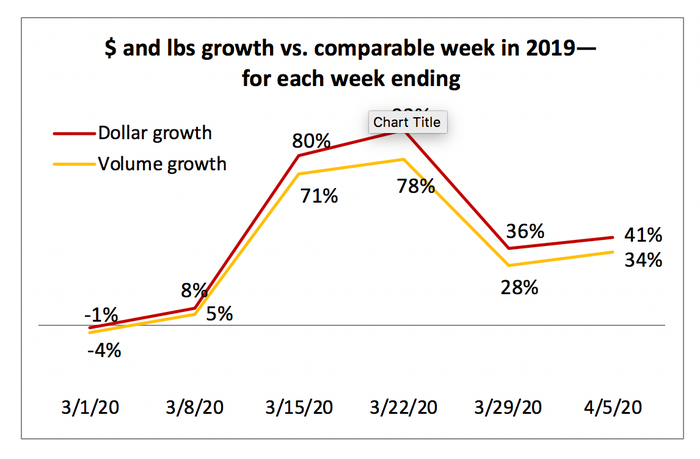COVID-19: Meat sales remain elevated
Meat and particularly beef were center of the bullseye as consumers stocked up.
April 23, 2020

The month of March and early April held many surprises for Americans. It meant social distancing, stay-at-home orders from their state governors and trips to stock groceries. The stockpiling of groceries kept meat sales elevated.
According to 210 Analytics President Anne-Marie Roerink, the final week of March and first week of April showed a high demand for packaged and frozen food. Those groceries are accounting for a greater share of grocery spending during the pandemic.
Roerink said the demand for meat and poultry remains highly elevated. In fact, data from Information Resources, Inc. (IRI), a company that tracks retail marketing and sales, revealed meat has been the leading sales driver for the perimeter of grocery stores since the onset of coronavirus in the U.S.
Stockpiling likely will taper some as pantries and freezers become full. However, Roerink believes increased everyday demand likely will continue while social distancing measures are in effect. This is due to shoppers preparing more home-cooked meals across the board, from breakfast to dinner.
“As the COVID-19 outbreak accelerated across states during the first week of April, grocery shopping continued to be affected. While the big panic-buying weeks in non-edibles appear to be behind us, meat sales remained highly elevated during the week ending April 5,” she says.
The second group of states to issue stay-at-home orders showed a spike in food sales slightly later than the first group and meat dollar sales were 41% higher during the week of April 5 this year than last. Volume sales increased 34% over the comparable week in 2019. Total perimeter sales were up 16%, with meat continuing to be the lead sales driver for fresh departments, according to IRI data.

“Sales were likely influenced by the earlier Easter and a higher everyday demand that is driving a new baseline that sits well above the old normal. At the same time, sales results must be seen against the backdrop of many stores having shortened opening hours, closed service departments, metered entry of shoppers, purchase limitations on popular items and continued out-of-stocks for others,” according to Roerink.
All meat and poultry continued to sell far above typical levels, with turkey continuing to have the highest percentage gains, followed by beef that also had the highest absolute dollar gains. Year-to-date, dollar gains for total meat are up 18.5% over the comparable period in 2019, according to IRI.
Source: 210 Analytics and IRI, which is solely responsible for the information provided and is wholly owned by the source. Informa Business Media and all its subsidiaries are not responsible for any of the content contained in this information asset.
You May Also Like



